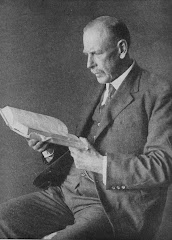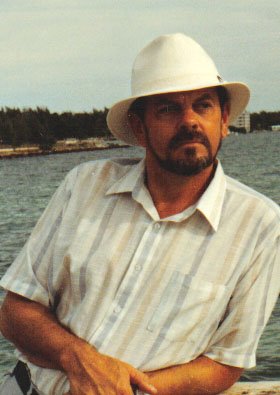Henry Rusby was an Indiana Jones type of scientist. He was from Franklin (Essex County) New Jersey which has now been renamed as Nutley. While in his late teens, Henry explored the then remote hills of northern New Jersey and established an impressive herbarium. He took this carefully preserved and categorized collection to the Centennial Exposition in Philadelphia in 1876 and won first prize. The collection was then sold for a sum sufficient to finance most of his education at New York University including the Medical College. While still a medical student he went to Texas and New Mexico in 1880 as an agent for the Smithsonian Institution. This was during and in the area of the unfortunate Apache conflicts and then in 1883 he returned to Arizona to study and collect medicinal flora of Arizona for Parke, Davis and Co. After completing medical school he took a two year trip for Parke Davis to explore remote areas of Colombia, Ecuador, Peru, Chile, Bolivia and Brazil. He especially looked for the coca plant to find a source of cocaine to be used for medical purposes. When finished, instead of returning straight home he decided to travel the course of the Amazon River. His exciting near encounters with death, huge pythons, remote natives and disease left him near death. In fact, his family thought he had died.
Eventually he returned home with thousands upon thousands of plant specimens and many of these are now part of the collection at the New York Botanical Gardens. Henry became Dean of the College of Pharmacy at Columbia University. He traveled the lower Orinoco in 1896, then through Colombia in 1917 and across South America again in 1921-1922.
From 1907 to 1916 he served as an expert pharmacognosist for the Bureau of Chemistry of the Department of Agriculture. Several times he served on the revision committee of the United States Pharmacopoeia and that of the National Formulary. Elected President of the American Pharmaceutical Association he received their Remington Medal and similar medals from the societies of Great Britain and Germany.
I think about Indiana Jones because Henry was rugged in appearance and had great physical vigor and considered becoming a professional boxer during his youth. .The New York Times called him a man after Theodore Roosevelt’s heart and he made his last trip across South America at the age of 66 and was known for chasing a robber in the city streets when aged seventy two. He died in Florida at age 85 and left behind over 45,000 plant species, thousands of which were previously unknown.. It is said of him that he was “of the most colorful of the scientific adventurers who opened new sources of plant drugs in remote regions of the Americas.” He was a proponent of the study of medicinal plants on a truly scientific basis (pharmacognosy) and “American pharmacy felt the influence of his active and courageous mind.”
On his trips he collected many specimens of birds which he sold to Audubon and associates for their collection, the income was used to help finance his trips or side trips.
He also left behind the book of his major first trip across the Americas in the area of the basins of the Beni, Madeira and the Amazon titled "Jungle Memories". He wrote 4 other books including A Manual of Botany and Properties and Uses of Drugs.
If I tried to call him “Jersey Hank” it does not have the excitement of “Indiana Jones”but we might try “Amazon Rusby” . Anyway, I would like to tell you of some other influences of Henry. His Father and my Great Grandfather, John Rusby was a devout Methodist. Henry attended a Methodist preparatory school, Centenary Collegiate Institute in Hackettstown, NJ. His Brother, Samuel (my Grandfather) became a Methodist Minister. Even though Henry was an MD he preferred to study and collect medicinal plants and was concerned with the adulteration of drugs. Was this partly because of his religious background? It has been reported that a very high percentage of medical doctors attend church regularly. It is a surprisingly high percentage. We also have the revelations of 7 noted scientists, including Werner VonBraun who all believe that too many exacting happenings had to occur at the precise moment they did for there not to have been some type of influence or guidance. We can also find two references in the bible where GOD stated that the fruit of the trees were to feed man and the leaves were to heal him. (Revelation 22:2 and Ezekiel 47:12).
Today, I know that a high percentage medical professionals have a reverence for the amazing properties and abilities of the body. How many times are they amazed at the ability of the body to heal its bones, grow new cells and protect itself when they trick it into thinking it needs to build antibodies when it is given an inoculation. A couple of years ago Forbes Magazine carried some articles about new fields of science and several of these articles involved the ability of the body to cure itself.
A number of years ago, after the discovery of many ancient scrolls a friend announced the closing of his successful accounting business so he could go to his homeland of Israel and study with the scholars of ancient Hebrew writings.
I was so uniformed that I marveled at his desire to study his religious heritage. But about 6 months later I worked with a German gentleman who had returned from Israel and working with the scholars of ancient Hebrew writings. Through his kindness I became a little more “street smart” and learned a good lesson. He told me that in the ancient writings, the most skilled scholars were able to include hidden messages. These would be worked in from the opposite direction such as left to right and/or bottom to top. He paid for his time and the scholar found a message for him. It said, and I repeat it as close as I can remember that “ one day a very common substance will be discovered that when something is left out it will become a miracle material of great benefit”.
He thought he found it in ozone treatments. Later he decided that was not it. I thought it might be the properties of the water of the Hunza tribe in Northern Pakistan. I do not know.
However, I can relate to you with some assurance that if it is something very common and if it is growing in your yard or garden it will never be discovered because it will never be researched. Our present systems depends entirely on the need to recover the billions necessary to research common substances for new uses and there is no way to recover costs of research for existing products.
One of Henry Hurd Rusby’s botanical samples that is 85 years old and in the collection of the botanical gardens was found to be still highly potent after all this time. The article about the testing of this herb can be read at: www.herbalgram.org/default.asp?c=85yobc
I will add more about Dr. Rusby as I receive the information. If you have something to contribute I would appreciate your adding a comment.
Several of us have collected information and traced our Rusby family tree back to Thomas Rusby in the 1400's in England. I have not been able to share this information with the descendants of Dr. Rusby. If you know of them please help me find them so I can send them the information about their wonderful family.
Dr. Rusby was married to Retta Hanna and they had 4 children, Lawrence,Ruth, Constance and Marguerite.
Constance married William Couper and they had 2 children, Henry and Nancy.
Marguerite married Kenneth Muir and they had a daughter Phyllis.
Sunday, May 3, 2009
Subscribe to:
Comments (Atom)



